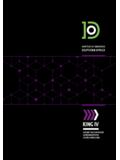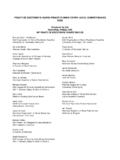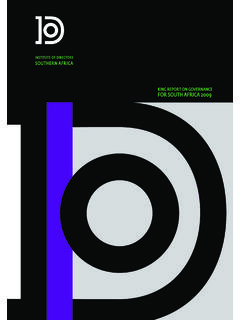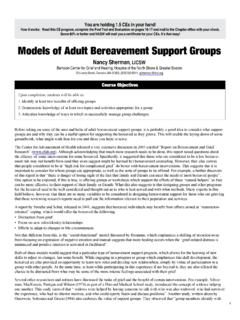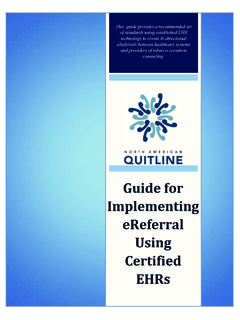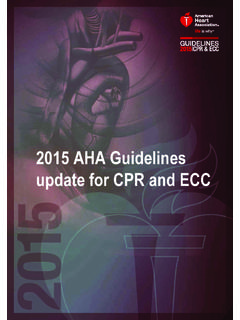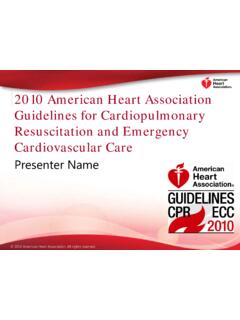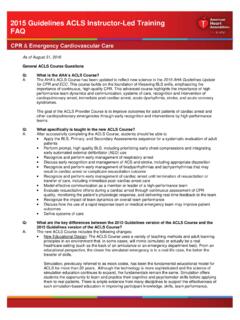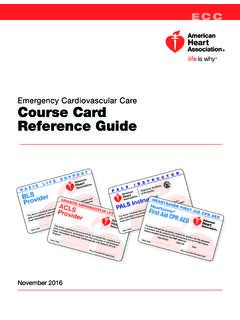Transcription of American Heart Association Advanced Cardiovascular Life ...
1 American Heart AssociationAdvanced CardiovascularLife SupportPrecourse WrittenExaminationMay 2001 2001 American Heart AssociationACLS Provider Course Precourse Exam2 ACLS Provider CoursePrecourse Written ExaminationThis is a single-answer multiple-choice examination. There is only one correct answer to eachquestion. Do not write on this question sheet. Circle the correct answer on your answer of the following actions is done first to restore oxygenation and ventilation toan unresponsive, breathless, near-drowning victim? water from the victim's lungs by performing the Heimlich water from the victim s lungs by starting chest cervical spine with c-collar and spine board, then start the the airway with a jaw-thrust maneuver, provide in-line cervical stabilization, startthe intubation has just been attempted for a victim of respiratory arrest.
2 Duringhand ventilation with a bag, you hear stomach gurgling over the epigastrium, andoxygen saturation (per pulse oximetry) fails to rise. Which of the following is themost likely explanation for these findings? of the hypopharyngeal of the left main of the right main tension of the following patients needs immediate intubation? elderly woman with severe chest pain and shallow respirations at 30 55-year-old insulin-dependent diabetic with ST-segment elevation and runs of apneic patient whose chest does not rise with bag-mask subdued, alcohol-intoxicated college student with a reduced gag treating a trauma victim who is in shock and deeply comatose, which of thefollowing is the airway of choice?
3 Tracheal patient's own nasopharyngeal oropharyngeal airwayACLS Provider Course Precourse of these lists of CPR performance and AED operation is correct and in the rightsequence? someone to call 911, attach AED electrode pads, open the airway, turn on theAED, provide 2 breaths, check for a for the AED and barrier device to arrive, open the airway, provide 2 breaths, checkfor a pulse, if no pulse attach AED electrode pads, follow AED someone to call 911, open the airway, provide 2 breaths, check for a pulse, if nopulse attach the AED, follow AED 2 breaths, check for a pulse, if no pulse perform chest compressions for 1minute, call for the AED.
4 When the AED arrives attach electrode are operating an AED in an attempted resuscitation of a man who collapsed inthe airport. After delivery of 3 successive shocks, your pulse check indicates he stilllacks a pulse. What is the next thing you do? the victim s CPR until EMS personnel CPR for 1 minute, then reanalyze the victim's the AED attached and start transport to the nearest ED, stopping every 3 minutesfor the AED to patient remains in VF cardiac arrest after 3 stacked shocks, tracheal intubation,epinephrine 1 mg IV, and a 4th shock. Which of the following drug-dose combina-tions should this patient receive next?
5 150 mg IV given over 10 1 to mg/kg IV 50 mg/min, up to a total dose of 17 1 to 2 g, appropriately diluted, IV patient in VF cardiac arrest has failed to respond to 3 shocks, epinephrine 1 mg IV,and a 4th shock. You give the medication nurse a standing order to administerepinephrine every 3 minutes as long as the resuscitation continues. Which of thefollowing dose regimens is recommended? 1 mg, 3 mg, 5 mg, and 7 mg (escalating regimen) mg/kg per dose (high-dose regimen) 1 mg IV push, repeated every 3 1 mg IV push, followed in 3 minutes by vasopressin 40 U IVACLS Provider Course Precourse arrive at the side of a 55-year-old man in cardiac arrest.
6 The first AED analysisregisters shock indicated. But before the shock can be delivered, the EMTs learnthat the man has gone 12 minutes without any bystander CPR. What actions shouldthe EMTs take next? CPR, supplement with 100% O2, continue until paramedics the AED to charge and CPR, supplement with 100% O2 for 3 minutes, reanalyze, shock if CPR, contact medical control, request permission to stop resuscitative treating a patient in persistent VF arrest after 3 shocks, you consider usingvasopressin. Which of the following guidelines for use of vasopressin is true?
7 Vasopressin 40 U every 3 to 5 vasopressin for better vasoconstriction and -adrenergic stimulation than providedby vasopressin as an alternative to epinephrine in shock-refractory vasopressin as the first-line pressor agent for clinical shock caused patient arrives in the ED. CPR continues with ventilations provided through atracheal tube inserted in the field. Chest compressions produce a femoral pulse thatdisappears during a stop compressions pause. During the pause the cardiacmonitor shows narrow QRS complexes at a rate of 65 bpm. At this point what is thenext action you should take?
8 For tracheal tube dislodgment and improper tube an IV, administer atropine 1 mg IV an IV, send blood samples for measurement of serum electrolytes and a toxic arterial blood gases to check for acidosis, hypoxia, and have intubated a patient with PEA. You hear good bilateral breath sounds, andyou see obvious bilateral chest rise. Two minutes after epinephrine 1 mg IV is given,PEA continues at 30 bpm. Which of the following actions should be done next? atropine 1 mg transcutaneous pacing at a rate of 60 a dopamine IV infusion at 15 to 20 g/kg per epinephrine (1 mL of 1:10 000 solution) IV bolusACLS Provider Course Precourse which of the following PEA patients is sodium bicarbonate therapy (1 mEq/kg)likely to be most effective?
9 Patient with hypercarbic acidosis due to a tension patient with a brief arrest patient with documented severe patient with documented severe cardiac arrest patient arrives in the ED in PEA at 30 bpm. CPR continues, propertube placement is confirmed, and IV access is established. Which of the followingmedications is most appropriate to give next? chloride 5 mL of 10% solution 1 mg cardioversion at 200 bicarbonate 1 mEq/kg of the following drug-dose combinations is recommended as the initialmedication to give to a patient in documented asystole?
10 3 mg 3 mg 10 mL of a 1:10 000 solution mg a monitor attached to a person in cardiac arrest displays a flat line, youshould execute the "flat line protocol." Which of the following actions is included inthis protocol? monitor display for sensitivity or gain a right-sided 12-lead LEAD SELECT control from lead II to paddles and a lower energy (100 J) defibrillatory shock to bring out possible occult VFACLS Provider Course Precourse 88-year-old man in normothermic cardiac arrest arrives in the ED after 15 minutesof continuous asystole.
